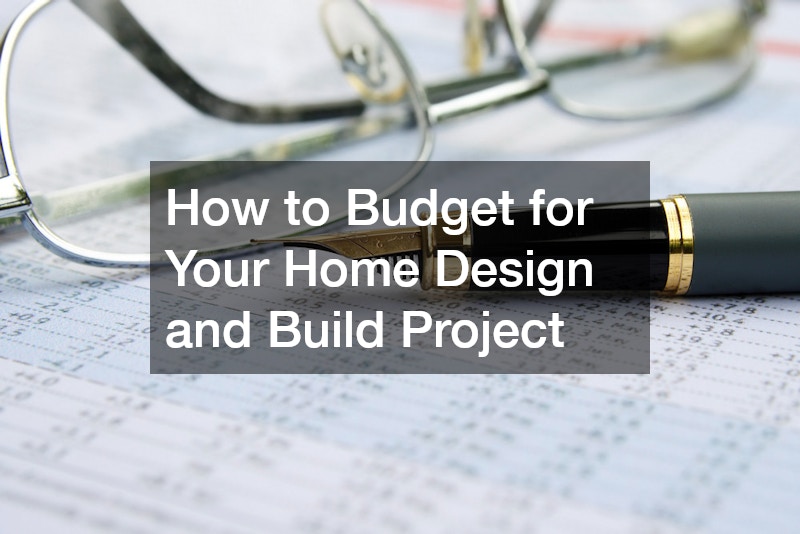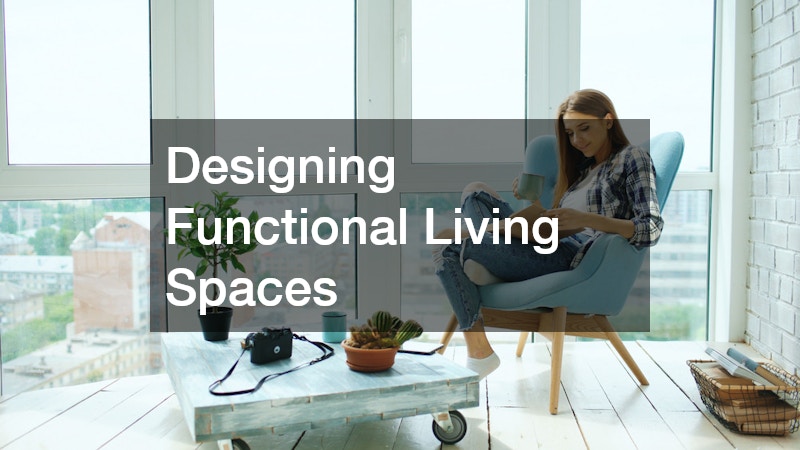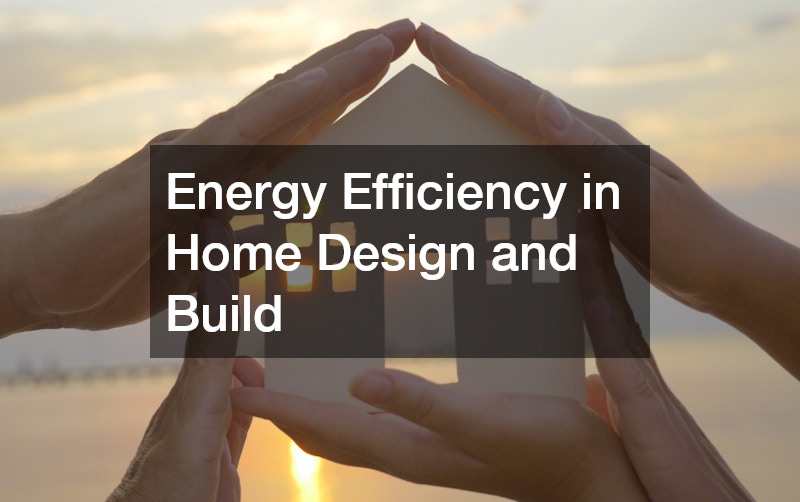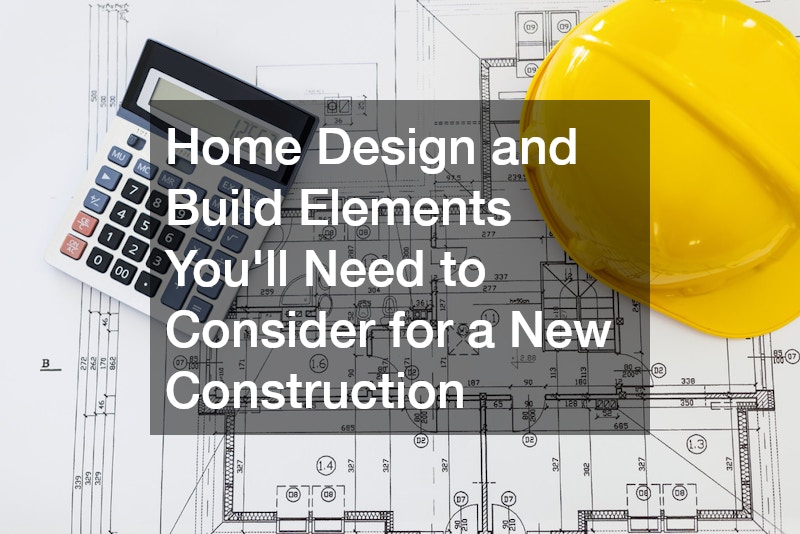Embarking on a new construction project is an exciting venture, filled with endless possibilities and the promise of a dream home. However, the process involves a multitude of decisions that require careful consideration. From the foundational aspects to aesthetic choices, each element plays a crucial role in creating a functional, visually appealing, and sustainable living space. This article explores the essential components of home design and build, guiding homeowners and builders through the complexities of new construction. By understanding these elements, you can better navigate your project and ensure it aligns with your vision and lifestyle.
Understanding the Basics of Home Design and Build
What Are the Fundamental Principles?
At the heart of home design and build lie fundamental principles that guide the entire process. These principles include functionality, aesthetics, sustainability, and safety. A well-designed home should not only be visually appealing but also serve the practical needs of its inhabitants. This involves creating spaces that promote comfort and efficiency while also considering the environmental impact of materials and construction methods.
Key Distinctions Between Design and Build
The distinction between design and build can often be a source of confusion. Design refers to the planning and conceptualization of a space, encompassing architectural styles, layouts, and aesthetics. In contrast, build focuses on the actual construction process, which involves selecting materials, managing labor, and ensuring that the project stays on schedule and within budget. Understanding these differences is essential for effective communication between homeowners, architects, and builders.
The Role of Architects and Builders
Architects play a vital role in home design by creating detailed plans that reflect the homeowner’s vision while adhering to zoning laws and building codes. Builders, on the other hand, are responsible for bringing those plans to life. They coordinate the various aspects of construction, from sourcing building supplies to overseeing labor. For successful collaboration, it’s crucial for homeowners to engage both architects and builders early in the process, ensuring that design intentions are translated accurately during construction.

How to Budget for Your Home Design and Build Project
Establishing a Realistic Budget
Creating a budget is one of the most critical steps in any construction project. It involves estimating costs associated with materials, labor, permits, and unexpected expenses. Homeowners should account for various elements, such as the installation of a well pump for water supply, heating and cooling systems for climate control, and garage door services for functionality. Setting aside a contingency fund—typically around 10-20% of the total budget—can help mitigate financial surprises that may arise during construction.
Cost-Saving Tips
There are several strategies homeowners can employ to save costs without compromising quality. Researching and comparing different plumbing companies, for instance, can yield competitive pricing for essential installations. Additionally, choosing locally-sourced building supplies can reduce transportation costs. Opting for pre-manufactured metal fabrications for certain structural elements may also cut down on labor and material expenses.
Dealing with Unexpected Expenses
Even with meticulous planning, unexpected expenses can occur. These may arise from delays, changes in design, or unforeseen structural issues. When such situations arise, it’s important to remain flexible and communicate with your builder about the best solutions. Keeping a detailed record of all expenditures can help track your budget and identify areas where adjustments may be necessary.
Choosing the Right Materials
Factors to Consider in Material Selection
Selecting the appropriate materials for your home is paramount. Factors such as climate, durability, and maintenance requirements should influence your choices. For example, house siding made of fiber cement is a popular choice due to its resilience and low upkeep, while wood siding offers natural beauty but requires more maintenance. Consulting with experts, including furnace installers and concrete suppliers, can provide valuable insights into the best materials for your specific needs.
Eco-Friendly Building Materials
Sustainability is becoming increasingly important in home construction. Many homeowners are opting for eco-friendly building materials that minimize environmental impact. Reclaimed wood, recycled metal fabrications, and low-VOC (volatile organic compound) paints are excellent choices that contribute to healthier indoor air quality and reduce your carbon footprint. Incorporating renewable energy sources, like solar panels, can further enhance your home’s sustainability.
Longevity and Maintenance of Materials
When choosing materials, consider their longevity and maintenance requirements. Investing in durable materials may require a higher upfront cost but can save money in the long run. For instance, opting for high-quality concrete can provide a solid foundation that withstands wear over time. In contrast, cheaper alternatives may require frequent repairs and replacements, ultimately increasing long-term costs.
Home Design and Build Permits: What You Need to Know
Types of Permits Required
Navigating the permit process is crucial for any new construction project. Common permits include building, electrical, plumbing, and zoning permits. Depending on your location and project scope, additional permits may be necessary, such as those for installing a well pump or for modifications to heating and cooling systems. Researching local regulations early in the planning stage can help streamline the process and prevent costly delays.
How to Apply for Permits
Applying for permits typically involves submitting detailed plans and specifications to your local building department. This may include architectural drawings, engineering reports, and documentation of compliance with zoning laws. Working closely with your architect and builder can simplify the application process, ensuring that all necessary information is included and that your application is approved without unnecessary hurdles.
Common Issues and How to Resolve Them
Permitting issues can arise, leading to project delays. Common problems include incomplete applications, insufficient documentation, or non-compliance with local codes. To mitigate these issues, maintain open communication with your builder and local authorities. Regularly follow up on the status of your applications and address any concerns promptly to keep your project on track.

Designing Functional Living Spaces
Open Floor Plans vs. Traditional Layouts
One of the significant design decisions in a new construction project is choosing between an open floor plan and a more traditional layout. Open floor plans offer flexibility and encourage social interaction, making them ideal for families and entertaining. In contrast, traditional layouts provide defined spaces that may offer more privacy. Consider your lifestyle and how you envision using your home to determine which layout best suits your needs.
Designing for Future Needs
When designing your home, it’s essential to consider future needs. This might involve planning for a growing family, accommodating aging parents, or creating spaces for remote work. Features such as a dedicated home office, adaptable bedrooms, and sufficient storage can enhance your home’s functionality and longevity. Engaging with a knowledgeable builder can provide insights into incorporating these elements into your design.
Integrating Outdoor and Indoor Spaces
Creating a seamless connection between indoor and outdoor spaces can significantly enhance your home’s livability. Features such as large windows, sliding glass doors, and covered patios allow natural light to flow into your home while providing easy access to outdoor areas. Incorporating an under deck drainage system can also help manage water runoff from upper decks, creating functional outdoor spaces that can be used year-round.
Incorporating Smart Home Technology
Benefits of Smart Home Systems
Smart home technology offers numerous benefits, including increased convenience, security, and energy efficiency. Home automation systems can control lighting, heating and cooling, and security features remotely, providing peace of mind and energy savings. Integrating these systems during the construction phase can save costs and ensure optimal functionality.
Popular Smart Home Features
Some popular smart home features include smart thermostats, security cameras, smart locks, and automated lighting systems. These technologies not only enhance your home’s functionality but can also be a significant selling point should you decide to move in the future. When discussing these options with your builder, ensure compatibility with existing systems and consider the long-term benefits of your investments.
Cost Considerations and Budgeting
While incorporating smart home technology can elevate your living experience, it’s essential to budget accordingly. Researching various smart home systems can help you identify options that fit your needs and budget. Consulting with your builder about integrating these features during construction can also lead to cost savings compared to retrofitting systems later.

Energy Efficiency in Home Design and Build
Importance of Energy-Efficient Design
Energy-efficient design is a fundamental aspect of modern home building. Not only does it reduce utility bills, but it also contributes to a smaller carbon footprint. Key elements include proper insulation, energy-efficient windows, and the use of sustainable building materials. Investing in energy-efficient appliances and systems, such as a high-efficiency furnace, can also enhance your home’s overall efficiency.
Using Renewable Energy Sources
Incorporating renewable energy sources, like solar panels or wind turbines, can significantly reduce reliance on traditional energy sources. Many homeowners find that integrating these systems not only lowers energy costs but also increases the value of their home. Additionally, some local governments offer incentives for renewable energy installations, making them a financially viable option.
Certification and Energy Ratings
Consider pursuing energy certification programs, such as LEED (Leadership in Energy and Environmental Design), which can provide third-party validation of your home’s energy efficiency. These certifications can enhance marketability and potentially lower energy costs. Understanding energy ratings for appliances and systems can also guide your choices during the material selection process.
Addressing Safety and Security
Planning for Natural Disasters
When designing a new home, it’s vital to consider safety measures, particularly in areas prone to natural disasters. This may involve using reinforced materials, implementing flood-resistant designs, or installing a robust HVAC system to withstand extreme weather conditions. Consulting with your builder about local risks can help tailor your design to mitigate these concerns.
Incorporating Security Features
Home security is another critical aspect of design. Features such as security cameras, smart locks, and alarm systems should be integrated into your design from the outset. Discussing security options with your builder and incorporating them into your construction plans can enhance safety without compromising aesthetics.
Ensuring Compliance with Safety Standards
Compliance with safety standards is non-negotiable in home construction. Understanding local building codes, fire safety regulations, and electrical standards will ensure that your home is not only safe but also legally compliant. Regular inspections during the building process can help identify potential safety issues early, ensuring they are addressed before completion.
Understanding Building Code Compliance
Overview of Building Codes
Building codes are essential regulations that govern the construction of homes. They ensure safety, health, and welfare standards are met. Familiarizing yourself with local building codes is crucial to avoid delays and costly modifications later in the construction process.
Common Compliance Challenges
Compliance challenges often arise due to changes in design or unexpected issues during construction. These can include issues related to plumbing, electrical systems, or structural integrity. Regular communication with your builder and prompt addressing of any concerns can help navigate these challenges effectively.
The Role of Inspections
Inspections play a vital role in ensuring compliance with building codes. Various stages of construction will require inspections, including foundation, framing, and final walkthroughs. Engaging with local inspectors early in the process can help clarify requirements and prevent potential issues from arising.

The Importance of Aesthetic Design
Balancing Function with Aesthetics
Aesthetic design is a key element in creating a home that feels personal and inviting. Balancing function with beauty is essential, as every design choice should enhance the overall experience of the space. This may involve selecting colors, textures, and furnishings that complement each other while serving practical purposes.
Current Design Trends
Staying informed about current design trends can inspire your choices. Popular trends may include minimalist designs, biophilic elements that connect indoor spaces to nature, and the use of bold colors or patterns. Collaborating with an architect can help you incorporate these trends while ensuring they align with your vision.
Personalizing Your Home Design
Ultimately, your home should reflect your personal style and preferences. Incorporating unique elements, such as custom metal fabrications or bespoke furniture pieces, can create a distinctive atmosphere. Personalization is key to transforming a house into a home that resonates with your lifestyle and values.
Conclusion
Building a new home is a complex yet rewarding process that requires thoughtful planning and execution. By understanding the essential elements of home design and build—ranging from budgeting and material selection to compliance with regulations—you can navigate the challenges of construction with confidence. Whether you’re choosing an under deck drainage system for your outdoor spaces, selecting the right plumbing company for installations, or working with concrete suppliers for your foundation, each decision impacts the overall outcome of your project. With careful consideration and expert guidance, you can create a home that is not only functional and beautiful but also sustainable and aligned with your long-term goals.

